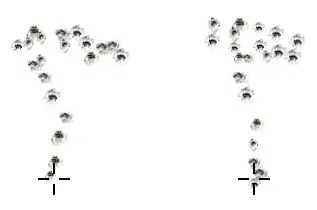BD124 Insights
Your go-to source for the latest news and informative articles.
Conquering CS2 Recoil Patterns: Your New Best Friend in the Digital Battlefield
Master CS2 recoil patterns and dominate the digital battlefield! Unlock pro tips and strategies to elevate your gameplay and conquer your enemies.
The Science Behind CS2 Recoil Patterns: Understanding the Mechanics
Understanding the mechanics of recoil patterns in CS2 is crucial for players aiming to enhance their shooting accuracy. Recoil in any first-person shooter can be described as the deviation of a bullet's path from the intended target after firing a weapon. In CS2, each weapon has a unique recoil pattern that players must learn to master. This pattern typically consists of two components: vertical and horizontal recoil. Players can utilize training maps to practice and familiarize themselves with these patterns, ultimately allowing for better control during intense firefights.
Moreover, various factors affect how recoil behaves in CS2, including firing rate, movement speed, and even the player's stance. For instance, crouching can significantly reduce a weapon's recoil, while spraying bullets without stopping can complicate accuracy. To illustrate this, consider the following tips for managing recoil:
- Learn weapon patterns: Spend time in training modes to understand your chosen weapon's recoil.
- Control your fire rate: Alternate between bursts and full-auto fire to maintain better accuracy.
- Use proper positioning: Stand still or crouch for greater control and reduced recoil.
By mastering these elements, players can effectively harness the mechanics of recoil in CS2 to achieve greater success in matches.

Top 5 Tips to Master CS2 Recoil Control Like a Pro
Mastering recoil control in CS2 is essential for any competitive player looking to improve their game. Here are the top 5 tips to help you become a pros at managing recoil:
- Understand Weapon Patterns: Each weapon in CS2 has a unique recoil pattern that dictates how bullets spread when fired. Take time to play around with different guns in offline mode to familiarize yourself with their specific recoil trajectories.
- Practice Burst Firing: Instead of holding down the trigger, practice firing in controlled bursts. By shooting in short, planned intervals, you can maintain better accuracy and compensate for the recoil during each shot.
- Utilize the Crosshair: Keep your crosshair positioned at head level and adjust your aim as needed. This way, even when recoil takes your shots off target, you're more likely to hit your intended target if they're at head level.
- Adjust Your Sensitivity: Experiment with your mouse sensitivity to find the sweet spot that allows you to make precise adjustments while controlling recoil. Lower sensitivity can provide more control, while higher sensitivity may feel more comfortable for some players.
- Consistent Practice: The key to mastering recoil control is regular practice. Consider setting up custom games or utilizing aim training maps where you can focus specifically on recoil management without the distractions of a live match.
How to Create Your Custom Recoil Pattern Guide for CS2
Creating a custom recoil pattern guide for CS2 is essential for players looking to improve their shooting accuracy and overall performance in the game. To start, you need to familiarize yourself with the different weapons available and their unique recoil patterns. Take the time to practice in a controlled environment, such as a private match or training server, where you can focus solely on mastering the recoil. Document each weapon's spray pattern by firing and observing how the bullets deviate from the center. This will allow you to create a visual map that you can refer to later.
Once you have gathered information on the recoil patterns, it’s time to compile your findings into a guide. Structure your guide in an easy-to-read format, possibly using bullet points or a table to list each weapon alongside its corresponding recoil pattern. Include step-by-step instructions on how to control the recoil for each weapon, as well as tips for practicing effectively. Don’t forget to update your guide as you learn more about the game and discover new techniques, ensuring it remains a relevant resource for both you and your readers.